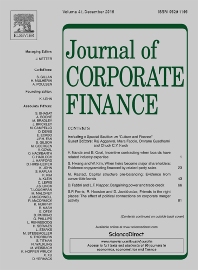Financial Integration, Economic Growth and Financial Stability
This research group investigates how international financial integration influences economic growth and financial stability. While theoretical models suggest that open capital markets lower financing costs and enhance risk-sharing, empirical outcomes often reveal more complex patterns. Many countries with liberalized capital accounts have not achieved faster growth, and recent crises have led to reversals in global capital flows.
The group addresses three central research questions: How does access to international capital shape firm productivity and sectoral development, particularly in capital-intensive industries? How do cross-border capital flows affect financial institutions in terms of risk-taking behavior, funding maturity, and systemic vulnerabilities? And how does the sequencing of capital account liberalization—such as opening to foreign direct investment before portfolio flows—impact financial resilience?
Research is based on detailed firm-level, bank-level, and cross-country macro-financial datasets. By integrating insights from international macroeconomics and financial development, the group contributes to a deeper understanding of the trade-offs and transmission channels involved in global capital mobility.
The findings aim to inform both academic discourse and the design of policy frameworks in a global context increasingly shaped by geopolitical uncertainty and shifting financial architectures.
Research Cluster
Productivity and InstitutionsYour contact

- Department Macroeconomics
Refereed Publications

What Does Peer-to-Peer Lending Evidence Say About the Risk-taking Channel of Monetary Policy?
in: Journal of Corporate Finance, 2021
Abstract
This paper uses loan application-level data from a peer-to-peer lending platform to study the risk-taking channel of monetary policy. By employing a direct ex-ante measure of risk-taking and estimating the simultaneous equations of loan approval and loan amount, we provide evidence of monetary policy's impact on a nonbank financial institution's risk-taking. We find that the search-for-yield is the main driving force of the risk-taking effect, while we do not observe consistent findings of risk-shifting from the liquidity change. Monetary policy easing is associated with a higher probability of granting loans to risky borrowers and greater riskiness of credit allocation. However, these changes do not necessarily relate to a larger loan amount on average.

From World Factory to World Investor: The New Way of China Integrating into the World
in: China Economic Journal, No. 2, 2017
Abstract
This paper argues that outward direct investment (ODI) is replacing international trade as the new way China integrates into the world. Based on two complementary datasets, we document the pattern of Chinese ODI. We argue that the rapid growth of China’s ODI is the result of strong economic development, increasing domestic constraints, and supportive government policies. Compared with trade integration, investment integration involves China more deeply in global business. As a new global investor, China’s ODI in the future is full of opportunities, risks, and challenges. The Chinese government should improve bureaucracy coordination and participate more in designing and maintaining international rules to protect ODI interests.
Working Papers

Within Gain, Structural Pain: Capital Account Liberalization and Economic Growth
in: New Structural Economics Working Paper No. E2018010, 2018
Abstract
This paper is the first to study the effects of capital account liberalization on structural transformation and compare the contribution of within term and structural term to economic growth. We use a 10-sector-level productivity dataset to decomposes the effects of opening capital account on within-sector productivity growth and cross-sector structural transformation. We find that opening capital account is associated with labor productivity and employment share increment in sectors with higher human capital intensity and external financial dependence, as well as non-tradable sectors. But it results in a growth-reducing structural transformation by directing labor into sectors with lower productivity. Moreover, in the ten years after capital account liberalization, the contribution share of structural transformation decreases while that of within productivity growth increases. We conclude that the relationship between capital account liberalization and economic growth is within gain and structural pain.







